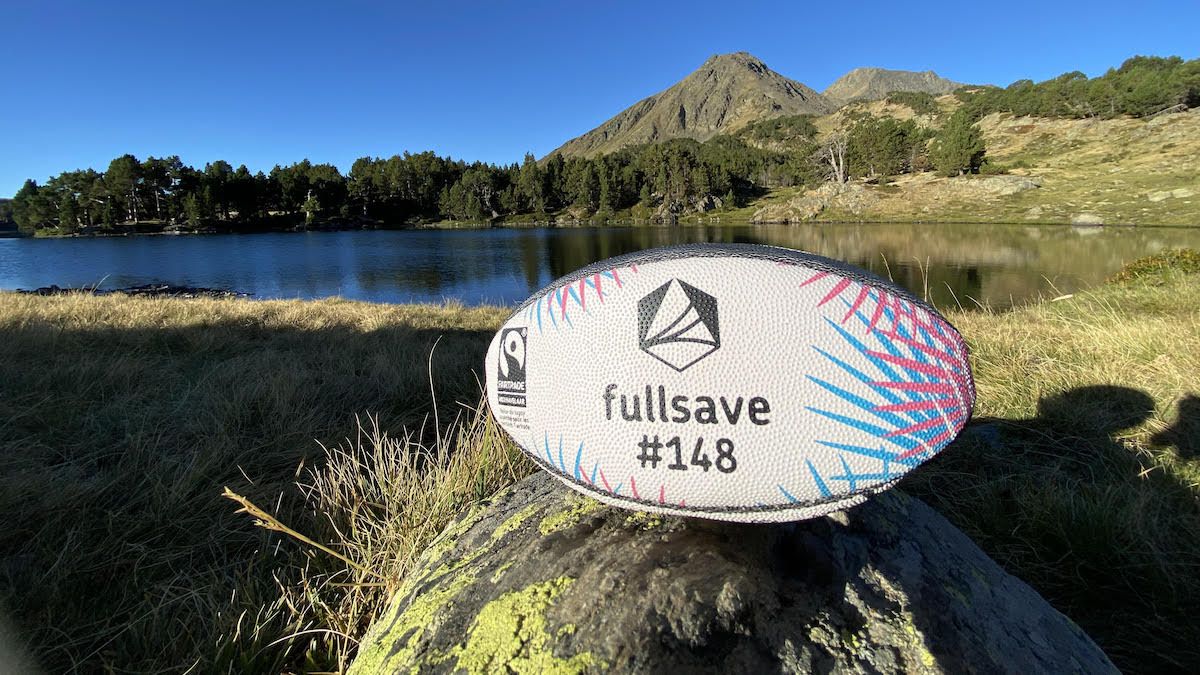 +
+
Intuitive Machines enables historic Moon landing with GitLab
- Enables critical collaboration
- Pipelines offer quality assurance
- Speeds development

Want to see what GitLab Ultimate can do for your team?
Founded in 2013, Intuitive Machines has evolved from a think tank into a space exploration company that provides space infrastructure and services required to commercialize the Solar System.
In 2024, working under a NASA contract, it became the first U.S. venture in 50 years — and the first commercial organization — to land a spacecraft intact on the Moon. Named one of Time magazine’s 100 Most Influential Companies of 2024, Intuitive Machines is at the forefront of lunar exploration.
We built a spacecraft from scratch in five years. If we hadn’t adopted GitLab, we could not have done that. The lander would not have flown — not in the timeframe we were working on and with the number of people we had on the team.
When Intuitive Machines won a $77 million contract from NASA in 2019 to build, launch, and land a spacecraft near the south pole of the Moon, the company’s software development team knew they only had five years to build all of the code they would need to communicate with, navigate, control, and fly the vehicle. And they couldn’t do it with a fragmented, time-consuming toolchain. They needed an end-to-end DevSecOps platform to create and deploy secure software faster, hit their deadlines, and become the first U.S. venture to land on the Moon since the famed Apollo missions in the early 1970s. They partnered with GitLab, and together they made history.
Confident in their chances at winning NASA’s lunar lander contract in 2019, Intuitive Machines adopted GitLab months before receiving the official confirmation, so they would be prepared to hit the ground running.
“The Moon lander project was easily an order of magnitude larger than anything we had ever done,” says James Blakeslee, software lead for Intuitive Machines. “We had a clean sheet so we had the opportunity to start from scratch. Looking at the software team and what we had to do, we knew we needed a platform that could handle all of our software challenges.”
He adds that it was important to have a single application where all of their 40 to 50 developers could work, gain visibility, and collaborate on shared projects. Everyone on their team needed to have the ability to drop in on any project and pitch in on whatever work needed to be done. “The whole team needed a platform with the same look and feel no matter what project or software process they were working on,” says Blakeslee. “And GitLab’s platform gave us that collaborative flexibility and it had the tools we needed already built into it. We went all in.”
Aside from using some legacy frameworks the company already had in place, Intuitive Machines was faced with building all of the software for the lander, named Odysseus or “Odie.” That meant building systems for ground control; simulation; in-flight needs, like navigation and communications; and landing functions.
“The reason the spacecraft works is because we tested the heck out of it with simulation tens of thousands or hundreds of thousands of times before the mission flew,” says Blakeslee. “And if the software in the control center doesn't work, you can't see the telemetry from the spacecraft and you can't talk to it. That would leave the operators blind. All of that is critical to the mission,” he adds. “All of that critical software was built with GitLab. We couldn’t have done it without the platform.”
Odysseus lifted off on February 15, 2024. It did not carry a human crew but did ferry commercial scientific payloads, including technology for radio observations, stereo cameras, and navigation doppler lidar. It landed on the Moon seven days after launch, joining only Russia, the U.S., China, India, and Japan as part of a small, elite group that has marked this achievement.
“We built a spacecraft from scratch in five years. If we hadn’t adopted GitLab, we could not have done that. The lander would not have flown — not in the timeframe we were working on and with the number of people we had on the team,” says Blakeslee.
Getting the spacecraft off the ground was not the end of the DevSecOps team’s job.
The first flight of any spacecraft is considered experimental, with engineers expecting to find and triage issues after launch. For Odysseus, “There were certainly things that came up in flight — Easter eggs — despite all the rugged testing that we did,” says Blakeslee. “That meant we had to patch software in flight. The deadlines were tighter. The stakes were higher. There was a lot more tension.”
Due to timelines set by orbital mechanics and thermal constraints, there were specific deadlines for sending patches to the lander, both in flight and on the Moon. To quickly create and deploy those patches — including fixes for laser range finders, communications, and navigation — they relied heavily on GitLab’s continuous integration (CI) pipelines to ensure the patches weren’t introducing any defects into the system.
The CI pipelines enable the teams to scrutinize the software and run quality-assurance checks at a speed that they couldn’t do manually, according to Blakeslee. Intuitive Machines’ developers were able to create their own regression, integration, quality assurance, and acceptance tests that run in the pipelines. All of these tests gave them insights into the code that was changed, and ensured that the patches hadn’t broken anything, were compatible with ground software, and actually fixed the problems they were meant to resolve.
“We vetted it all in the CI pipelines,” says Blakeslee, noting that they experienced a 20x decrease in pipeline execution time with GitLab. “You have to introduce good patches to the spacecraft. As you can imagine, if you introduce bad patches, it can be game over. It could absolutely end the mission, so you have to have something that vets them. GitLab did that for us.”
Those CI pipelines also helped the DevSecOps teams create patches for problems that were caused when the spacecraft unexpectedly landed at an angle on the Moon, leading to critical communication challenges. The teams had to quickly develop multiple software patches, verify them using the CI pipelines, and restore the communication systems promptly, ultimately sending the patches a quarter of a million miles to successfully get the lander functioning again.
With the fixes successfully uploaded into the lander’s systems, Odysseus operated on the lunar surface for seven days, the expected length of the mission. Now with a successful lunar mission in the books, Intuitive Machines is focused on launching a second lander in late 2024. Because their development process worked so well for Odysseus, Blakeslee says they plan to use the same setup.
“We have less than a year between lunar missions, so getting ready is only possible if we build on what we've already constructed,” he says. “This next spacecraft is an evolution of the first mission so we won't change tools and certainly don't plan to start over with the DevSecOps platform. We’re going to stick with what works.”
Intuitive Machines, hoping their lunar work will continue beyond the two landers, is one of three companies NASA has chosen to conduct year-long studies focused on developing a preliminary design and prototype for a lunar terrain vehicle (“LTV”). This LTV is set to be part of the Artemis missions, which will return humans to the Moon. NASA will choose one or more of the three companies to build a LTV, and then test its performance and safety. The vehicle is expected to be able to work for at least 10 years on the lunar surface in extreme temperatures, carry two astronauts, and use a robotic arm. The first Artemis mission is set to launch in 2029.
“If NASA ends up selecting us to build the LTV, we certainly will build the systems with GitLab because it has worked so well for us,” says Blakeslee. “We’d just scale up the DevSecOps group that we have now. We can't argue against the results of landing on the Moon for the first time for the U.S. in more than 50 years. So I plan to continue to use the ecosystem we used to do that.”
Once the second lunar lander has made it to the Moon’s surface, the company’s DevSecOps teams can pause long enough to evaluate how they’re using GitLab and add more platform features, such as taking advantage of GitLab runners to help manage the increasing size of their teams and the workloads on their pipelines.
Another thing Blakeslee says they’re looking forward to using is the artificial intelligence features in GitLab Duo.
“The AI revolution is totally upon us now and using GitLab Duo seems like a natural advancement for us,” he says. “I think it will help not just with code suggestions and code completion, but with answering questions about vulnerabilities and code. We’re always looking for ways to improve not just speed but the overall development experience.”
“AI is really an accelerant for development,” Blakeslee adds. “You’ve got to keep up with it if you want to continue to be competitive. That’s why GitLab Duo is on my radar.”
There was a 52-year-year gap between the Apollo mission in 1972 and when Intuitive Machines successfully landed Odysseus. And this first U.S. commercial lunar landing was a historic milestone — one that put Intuitive Machines on the map in the space exploration industry.
“Everything we were working on was aggregated into one very specific event and we didn’t have a lot of margin for error,” says Blakeslee. “Unless we had really good software quality assurance and automation around that assurance, we couldn’t have made it happen. I have no doubt in my mind that if I went back in time and picked other development tools, our software would have been late and broken, and we probably wouldn't have flown.”
“We absolutely could not have built a spacecraft in five years without GitLab. It helped us make history,” he adds. “That made a material benefit to the success of our business.”
All information and persons involved in case study are accurate at the time of publication.


